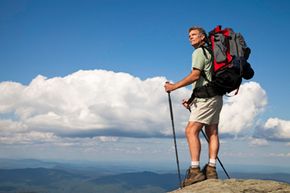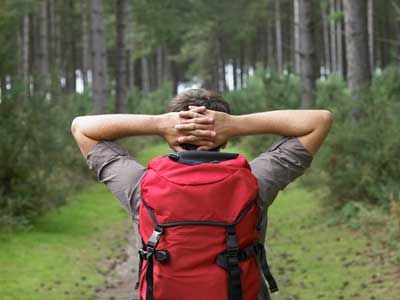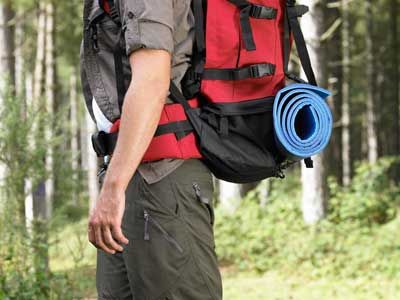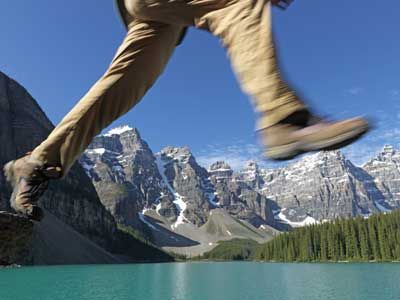It doesn't matter if you're biking or hiking, weight is the enemy when it comes to traveling under your own power. Those extra pounds will really weigh you down though, when you're on foot, without the benefit of wheels to cover ground more efficiently.
But it's not just the weight of the stuff you hump on your back that matters. The weight of your shoes exerts a noticeable drain on your energy and stamina, too. In fact, your shoes might be a bigger drag than you think. Experienced hikers even have a handy saying for this: "a pound on your feet equals five pounds on your back." And likewise, removing a pound of weight that's covering your feet feels like removing five pounds from your rucksack.
Advertisement
The thing with "homespun wisdom"-style sayings like this one is that they sound good, but sometimes fall apart under the unflinching scrutiny of scientific empiricism. And subjecting the mysterious to the cold eye of science is what we're all about, here. So we wanted to find out: is this rule of thumb (or perhaps that's "rule of foot") true? Is it accurate?
To the uninitiated, the thing to do before a lengthy walk seems obvious. Just be stingy with any weight to be suspended from your shoulders and back -- be it in a daypack, messenger bag, baby sling or what-have-you. OK, maybe you can't do much about the weight of the cargo in that baby sling -- but for everything else, the general rule is to be merciless. For hiking backpackers, this stinginess with mass means making lots of calculated weight trade-offs prior to a hike. These trade-offs affect how much food and water you can bring. That in turn decides how long you can enjoy the great outdoors before you have to reconnect with civilization to resupply. But it turns out there's more to the how-much-weight-you-can-carry equation.
As far as anyone can tell, the "one pound on your feet equals five pounds on your back" notion originated with Sir Edmund Hillary's successful U.S. Army have concluded one thing on the matter: Weight on the feet is disproportionately more exhausting than weight carried on the torso.
One of the most frequently cited works on the subject is a little Army report bearing this mouthful of a title: "The energy cost and heart-rate response of trained and untrained subjects walking and running in shoes and boots." The 1984 writeup explained the findings of researchers at the U.S. Army Research Institute of Environmental Medicine in Natick, Massachusetts. Building on other researchers' previous work, they found that even tiny increases in the weight of footwear could add up to significantly higher energy expenditures in subjects when walking or running. Without that extra foot weight, presumably, the subjects could have applied those burned calories toward carrying considerably more on their backs.
Several other studies reached similar conclusions. The consensus was that carrying an amount of weight on the feet required between 4.7 and 6.4 times as much energy as carrying that same weight on one's back [source: Johanssen].
That would seem to roughly support the old adage of 1 pound on the feet imparting the same amount of fatigue as if they were 5 pounds on the back.
The various studies' authors hypothesized the extra energy requirements could stem from the biomechanical limits of walking, or perhaps because of the stiffer construction of boots versus lighter and more flexible running shoes.
To be sure, you should consider lots of other factors besides weight when you buy your next pair of hiking shoes. The terrain you'll be traversing (hence the sole traction) matters. So does the weight of whatever you'll be hauling -- the more stuff you schlep, the more ankle support you'll need for your shoes to provide. The climate where you'll be hiking determines whether you'll want something waterproof (and more heat-trapping), or something more breathable. Those variables, in turn, could add to the weight of the shoe. Fortunately, the science of hiking footwear has advanced considerably and you can buy a lot of performance for little added weight penalty.
The bottom line: all things considered, the old "1-pound-for-5" rule would appear to be true, even if you quibble over the exact numbers: a lighter pair of shoes means you'll be able to go farther, more comfortably, than you would in a pair of heavily armored clodhoppers.
Advertisement



